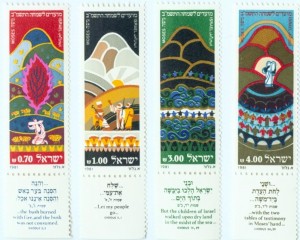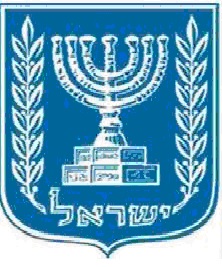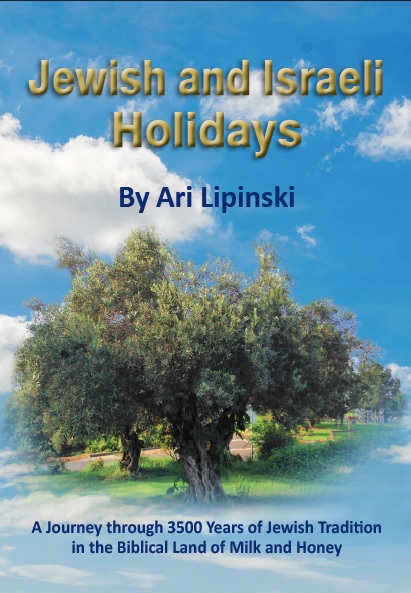BIBLE COMMENTARY, Jewish Hebrew TORAH Commentary of famous Rabbis explained in English
www.Bible-Friends.com , Lipinski Ari, MBA
Quote: Israel’s former President Shimon Peres when he was Prime Minister at a press conference upon a request from a journalist to tell his forecast of the future developments in the Middle East. Even though he came from the Holy Land … 🙂
Ari Lipinski lectures with audio-visual illustrations and humor about: Hebrew Bible Commentaries, Torah Weekly Portion, Israel, as well as about Israel’s Defense Policy, Israel Foreign Policy, Water in Israel, Ecological Innovations in Israel and about the Kibbutz. Ari Lipinski is a well known for delivering lectures about the Bible and specializes in special Hebrew Torah Commentaries of the Weekly Portion (Parashat HaShavua).
Ordering a lecture and further detailed subjects you may receive per email: See contact form at page bottom or: Tel: +49-172-7161894, Tel. IL: +972-54-7875745 Email: lipinskiari@gmail.com.
In the Bible & Torah Lectures by Ari Lipinski the original Hebrew Torah text is explained in English (or German) according to special Hebrew commentaries of famous Rabbis (but of comment books mostly not yet translated). New enriching insights are offered by comparing the original Hebrew text with various translations. Using colorful illustrations, pictures of Israel, maps and humor the stroll through Bible stories offers serious contemplation and fun as well. The lectures relate to the weekly Torah Portions (Parashat HaShavuah) and to relevant Jewish Holidays which take place close to the lecture date. Ari Lipinski specializes in adding uptodate scientific and political context to the study of the ancient stories. He shows the Bible is a most modern book.
Some topics are quotes from Ari Lipinski publications and are covered by copyright ©. The user of this website recognizes this copyright by using the site.
Bible – Parashat BeShalach – Ari Lipinski Comment 31.1.2015
24.3.2017-Abravalel-TuBishvat-
24.3.2017-Abravanel-Hagaddah-Pesach
The structure of the following comments is based on the original Hebrew Jewish Bible. In addition there are a few general topics relating to the Bible in general.
- Torah: Introduction into the special method of learning according to the weekly portions of the Torah reading (Parashat HaShavuah).
- Prophets and Scriptures: A study in the context of Torah subjects and historical events.
- Jewish Holidays: A listing of the Jewish Holidays and fasten days which appear in the Bible you may find under the following link: JEWISH HOLYDAYS (under this link you may also find post biblical holidays and fast days as well as Israeli holidays and memorial days).
- Glossary: A listing of relevant terms / terminology.
- Glossary: Glossary of persons.
The 5 books of the Torah are:
Bereshit בראשית (Genesis) : The Hebrew word means “In the beginning”
Shemot שמות (Exodus): The Hebrew word means “Names”
Vayikrah ויקרא (Leviticus) The Hebrew word means “And he called”
BaMidbar במדבר (Numbers) The Hebrew word means “In the desert”
Devarim דברים (Deuteronomy) The Hebrew word means “The statements” (The spoken words)
Following is the List of the Torah weekly portions (Parashat HaShavuah)
Please note that in each book the name of the first weekly portion is identical with the name of the book, because their name is derived from one of the first words of the relevant first sentence.
- All rights for the follwing Bible commentaries and explanations belong to Elazar Ari Lipinski and are protected by copyright © .
1. Book Bereshit בראשית / Genesis: the weekly portions:
-
- Bereshit
- Noach
- Lech Lecha
- Vayerah
- TU BiSHVAT, Torah Abravanel Comments Abraham planting – Article by Ari Lipinski 2-2015
- Chaye Sarah
- Toldot
- Vayetze
- Vayishlach
- Vayeshev
- Miketz
- Vayigash
- Vayechi
- Buch SCHMOT שמות / EXODUS
Die Wochenabschnitte
- Shemot: Some major subjects in this weekly portion are: The special importance of the fact that the Israelites kept their Hebrew names in Egypt. The preparation of Moses to become the leader of the children of Israel for the Exodus from Egypt. The revelation of God to Moses at the Burning Bush. Moses’ leadership qualities. The miracles Moses saw and implemented. The circumcision of Eliezer the of Moses and Ziporah. Explanations of the name of the LORD.
- Vaera: The differences between the revelation of the LORD to Moses and to the three fathers of the people of Israel before him. The love of Moses to the children of Israel. The significance of the four different terms relating to the Exodus to the liberation of the children of Israel from Egypt: Vehozety (and I took out), vega’alty (and I redeemed), velakachty (and I took), vehizalty (and I rescued). These four verbs in this weekly portion are the background for the four glasses of wine which one should drink during the Seder Evening (the festive opening meal of the Pesach Holiday celebrating the Exodus from Egypt). The educational significance of the Ten Plagues. The dilemma of the hardening of the heart of Pharaoh: did Pharaoh have a free will? Did he have a choice?
- Bo: The Exodus from Egypt of the children of Israel (Or the exodus of Egypt?). How and why did the Israelites borrow silver and gold from the Egyptians? The four prototypes of the sons of the Israelites. Instructions concerning the time definitions for days, weeks and months. Why was a Beth Din (rabbinical court) required to determine the timetable of holidays and of leap-years? How was the Pesach sacrifice a symbol for giving up of idolatry? The command instructing to have Tefilim (phylacteries).
- Beshalach: The Exodus from Egypt – the Exodus of Egypt? Pharaoh and his chariots and his horses ran after the Israelites trying to get them back to Egypt. The engulfing and drowning of Pharaoh and the Egyptians in the Red Sea after the miracle of the Israelites crossing the sea in the dry zone. The famous Song of the Sea which Moses sung in gratitude for God saving the Israelites from Egypt with miracles. The miracles of the Manna and of the quails and of turning the bitter water at Mara into sweet water for the people Israel to drink. The weekly portion ends with the treacherous attack of Amalek. The miraculous battle and victory against Amalek.
- Yitro: Yitro heard of the Splitting of the Sea and of the battle against Amalek. He then came to Moses. Did Yitro come to meet Moses before or after the reception of the Ten Commandments? What did Yitro advise Moses concerning the judicial system? The highlight of the weekly portion: The Ten Commandments. (How many commandments are actually included in the 10 Commandments?) How can we explain that the unique weekly portion containing the 10 Commandments is called “Yitro” (why did Yitro earn this high honor?)
- Mishpatim: After the 10 Commandments a comprehensive set of laws and regulations was given to the Israelites. How should the law of “Eye for an Eye” be understood? The central guideline was given: not to boil / eat the meat of a (kid) goat in its mother’s milk. The Covenant between the LORD and Israel. The sacrifices as an expression of the covenant.
- Terumah: The special donation / taxation called Terumah, which is actually literally “a lifting”. The significance of the construction of the “Mishkan”, Tabernacle. The special meaning of the Cherubim.
- Tezaveh: The unique importance of the Urim ve Thummim. The transfer of the chief priesthood from Moses to Aaron (Aharon in Hebrew the name of Aharon includes the fifth letter, he. It is very significant because it is one of the letters included in the spelling of the name of the LORD in Hebrew. So, by spelling the name of the brother of Moses without an H a valuable message contained in the original name is overseen, lost.)
- Ki Tisah: This weekly portion is famous because of the story of the Sin of the Golden Calf. Who were the sinners? How many were they? What did Moses do with the first Two Tablets of the Ten Commandments (Tablets of the Covenant)? The weekly portion describes how the instructions of counting the nation were. The sense of the donation (Terumah) of half a Shekel. A clarification of the meaning of the Hebrew terminology for a donation: Terumah.
- Vayakhel: The weekly portion includes a list of activities which are forbidden from being executed on Shabbat, even for the purpose of the construction of the Tabernacle (Mishkan). What are the qualities required from an artist? Donations for the Tabernacle.
- Pekudei: The important guidelines limiting the artistic creations for the Tabernacle. The instructions for donation management. The meaning of gold, silver and copper in the work related to the Tabernacle. The holiness of the Tabernacle.
-
- Book Vayikrah ויקרא/ Leviticus
- Vayikrah
- Tzav
- Shemini
- Tazriah
- Metzorah
- Acharey Mot
- Kedoshim
- Emor
- BeHar
- BeChukotai
- Book BaMidbar במדבר / Numbers
- BaMidbar
- Nassoh
- BeHa’alotecha
- Shalach
- Korach
- Chukat
- Balak
- Pinchas
- Matot
- Massaey
- Buch DWARIM דברים / Deuteronomy
- Devarim
- Va’etchanan
- Ekew
- Re’eh
- Shoftim
- Ki Tezeh: Der Wochenabschnitt handelt unter anderem vom Erbrecht, im Besonderen von der Bevorzugung der Erstgeborenen. Der große gelehrte Rabbiner Abarbanel (16. Jh.) erläutert die sinnbildliche Verbindung des Erstgeborenen mit der Schöpfung durch G’tt. Aller Anfang hat seinen Ursprung in der göttlichen Schöpfung. Ein zweites zentrales Thema im Abschnitt ist die Abhandlung der Bestrafung eines mürrischen Sohnes. Der Gelehrte Rabbiner Ibn Ezra (12. Jh.) sieht im mürrischen Sohn sogar den Epikorus (Ungläubigen, G’ttesleugner). Die Talmud-Gelehrten kommentieren dahingehend, dass die Eltern durch ihre Erziehungspflicht vorbeugend verhindern sollen, dass es zum mürrischen Verhalten eines Kindes kommt, da die Todesstrafe im Extremfall ansteht. Zu betonen ist, dass alle Gelehrten der Mischna- und Talmudzeit es verstanden, niemals die Strafe zu verhängen. Rabbiner Abarbanel erläutert die besondere Gefahr des mürrischen Sohnes als Ungläubigen, der versucht, andere aus dem rechten Weg zu verleiten. Ein weiteres zentrales Thema des Abschnitts ist die Anweisung, vor der Entnahme von Eiern aus einem Vogelnest, den brütenden Vogel aus dem Nest zu verscheuchen. Rabbiner S. R. Hirsch (19. Jh.) erklärt im berühmten Buch Chorew die erzieherische Bedeutung: Der eigene Drang, sich zu ernähren, soll nicht dazu führen, dem anderen Lebewesen einen qualvollen Schmerz zuzufügen. Ein Vogel, der sieht, wie seine eigenen Eier geplündert werden, leidet. Die Ehrung des Vogels, den man in die Freiheit verscheucht, drückt den Respekt gegenüber der göttlichen Schöpfung aus.
- Ki Tavoh: Der Wochenabschnitt spricht von Bikurim, dem Darbringen der Erstlinge der Ernte zum Tempel. Durch den Verzicht des Menschen auf die ersten Früchte seiner Arbeit drückt man laut dem bedeutenden Gelehrten Rambam (Maimonides) (12. Jh.) die Ergebenheit des Menschen und seiner Dankbarkeit G’tt gegenüber. Rabbiner I. Breuer (20. Jh.) in seinem Buch Nachliel beschreibt die jährliche Darbringung der ersten Früchte als Demonstration einer gesegneten und glücklichen Nation, die sicher und friedlich auf ihrem Boden wohnt und ihren Dank G’tt gegenüber zum Ausdruck bringt. Ein weiteres Thema, das die Gelehrten beschäftigt, ist das Steindenkmal, das die Kinder Israels unter Josua nach der Überquerung des Jordans (zwölf Steine) errichten mussten. Das Denkmal soll für alle Generationen an alle Wunder, die dem Volk Israel widerfahren sind, erinnern. Der Rabbiner HaGaon von Luzk (19. Jh.) erläutert, dass das Steinmonument zum Ausdruck bringt, dass das Volk Israel auf Verheißung G’ttes in das Land kommt, und dass die Verheißung mit der Erfüllung der Thora verbunden ist. Rabbiner Nachmanides (12. Jh.) erläutert, dass alle Völker das Recht Israels auf das Land durch die Thora verstehen sollen. Der Wochenabschnitt handelt auch von den Bestrafungen des Volkes Israels für die Nichteinhaltung der Thora. Unter anderem sind die Zerstörung des ersten und des zweiten Tempels zentrale Beispiele für die schweren Konsequenzen, die wir bis heute mittragen. Die Gelehrten (z.B. Nachmanides und Abarbanel) diskutieren ausdrücklich, die Interpretation des Wortes Geula (Erlösung). Die Thora stellt die Chance der Tschuwa (Reue und Rückbesinnung auf die guten Werte) in den Vordergrund. Dieser Gedanke spricht uns im Monat vor Rosch Ha-Schana besonders an.
- Nizavim: Der Wochenabschnitt handelt von der Brit (Bund) zwischen dem lieben G’tt und dem Volk Israel. Rabbiner Abarbanel (15.Jh.) und Malbim (19. Jh.) erläutern ausführlich die vielen Rechte, die dem Volk Israel aus dem Bund mit G’tt entspringen. So zum Beispiel das Recht auf das Land Israel und das Recht auf Freiheit nach dem Auszug aus Ägypten. Ferner erklärt Rabbiner Malbim die kabbalistischen Interpretationen über den Verbleib der Seele und über das Recht der Kinder auf das Land aufgrund ihrer Vorfahren. Rabbiner Abarbanel warnt in diesem Zusammenhang vor der Assimilation, die den Verlust des Bundes bedeutet. In diesem Zusammenhang erklären die Rabbiner die Gestaltung der Geula (Erlösung) in Israel mit dem Kommen des Maschiach Ben David (Messias). Ein Wochenabschnitt, der uns hoffnungsvoll vor dem neuen Jahr begleitet.
- Vayelech
- Ha’azinu
- Vezot HaBeracha
PERSONEN-VERZEICHNIS
In diesem Abschnitt finden Sie Informationen zu biblischen Figuren sowie zu berühmten jüdischen Bibel-Kommentatoren.
Abravanel (Abarbanel), Don Jizchak ben Jehuda, Rabbi (1437 -1508). Rabbiner, Staatsmann, Denker und bedeutender Kommentator der Bibel, der Pessach-Hagadda (Geschichte des Auszugs aus Ägypten), des Mischna-Traktats ‘Pirkei Awot’ sowie des philosophischen Werks des Rambam (Maimonides) ‘More Newochim’ (Lehrer der Unschlüssigen). Abarbanel wurde in Lissabon, Portugal geboren. In jungem Alter ist er bereits Finanzminister Portugals geworden. Im Jahre 1481 musste er als Jude bei Verlust seines Besitzes nach Spanien fliehen. Er wurde Finanzminister am vereinten Hofe von Castilien und Aragonien unter Isabella und Ferdinand. 1492 wurde mit den Juden spaniens trotz grosser Lösegeldangebote aus dem Land, wiederum enteignet, vertrieben. Er kam zuerst nach Neapel in Italien und schliesslich nach Venedig. Begraben wurde Abarbanel in Padowa. Allerdings wurde der dortige Friedhof bei einem Krieg kurze Zeit nach seiner Beerdigung vollständig zerstört, sodass sein Grab unauffinbar geblieben ist. Seine Kommentare kennzeichnen sich durch zwei Hauptmerkmale: Eine ausführliche Einleitung und eine Vielzahl von ihm gestellter Fragen, die er anschliessend beatwortet. Abarbanel nimmt in seinem Kommentar regelmäßig zu den Erklärungen der großen Gelehrten wie z.B. Raschi, Rambam (Maimonides), Ramban (Nachmanides) und Iben Ezra (Awraham ben Ezra) Stellung. Dabei zollt er Ihnen höchsten Respekt, obgleich er ihnen in der Sache nicht selten widerspricht.
Rambam (Maimonides), Mosche ben Maimon, Rabbi (1135 – 13.12.1204).
Der in Marokko geborene Rabbiner ist in frühem Alter nach Ägypten ausgewandert, wo er sowohl Vorsitzender der jüdischen Gemeinde Ägyptens als auch Hofarzt beim König geworden war. Rambam war auch ein bedeutender Astronom und Philosoph und gilt als einer der größten jüdischen Gelehrten überhaupt. Der Rambam gilt als einer der bedeutendsten Bibel- und Mischna-Kommentatoren, als auch als ein Philosoph von Weltruhm. Zu seinen Hauptwerken gehören u. a. sein Thora- und Bibelkommentar, sein Kommentar der Mischna, das Buch Mischne Thora (14 Bänder halachischer Vorschriften), seine philosophischen Werke, im Besonderen Moreh Newuchim (Lehrer der Verworrenen). Letzteres ist das Hauptwerk jüdischer Glaubensphilosophie bis heute. Die vom Rambam formulierten 13 Glaubenssätze des Judentums gehören zum täglichen Gebet eines Juden. Ferner gelten seine Briefe an Jemen, die er 1172 an die Juden Jemens gerichtet hat, als eine besondere Kollektion Trost und Hoffnung gebender Texte. Damals stand die jüdische Gemeinde Jemens unter fürchterlicher Verfolgung und bangte um ihr Überleben. Mit seinen Schriften wurde Rambam zum exponierten Verfechter der Verneinung jeglicher ‘Verdinglichung’ des G’ttesbegriffes. Er verneinte vehement die Zuordnung jeglicher Eigenschaftsbeschreibungen G’ttes. Seine berühmten 13 Ikarim (Grundprinzipien bzw. Glaubenssätze) stellen für viele die Essenz jüdischen Glaubens bis heute dar. Er war entschiedener Gegner des Determinismus und war vom Konzept des ‘Freien Willens’ fest überzeugt. Seine überragende Autorität als Gelehrter und religiöser Richter kommt im Volksmund mit dem Spruch zum Ausdruck: ‘Seit Mose bis Mose ist keiner wie Mose gewesen’. Er sei also nur mit Mose vergleichbar. Als Arzt hat Rambam eine Vielzahl medizinischer Schriften verfasst, in denen er u.a. die Bedeutung psychosomatischer medizinischer Zusammenhänge und eine holistische Konzeption vertreten hat.
Rashi, Schlomo Jizchaki, Rabbi (1040 – 5.8.1105)
############
[contact-form-7 id=”1534″ title=”Kontaktformular 1″]









